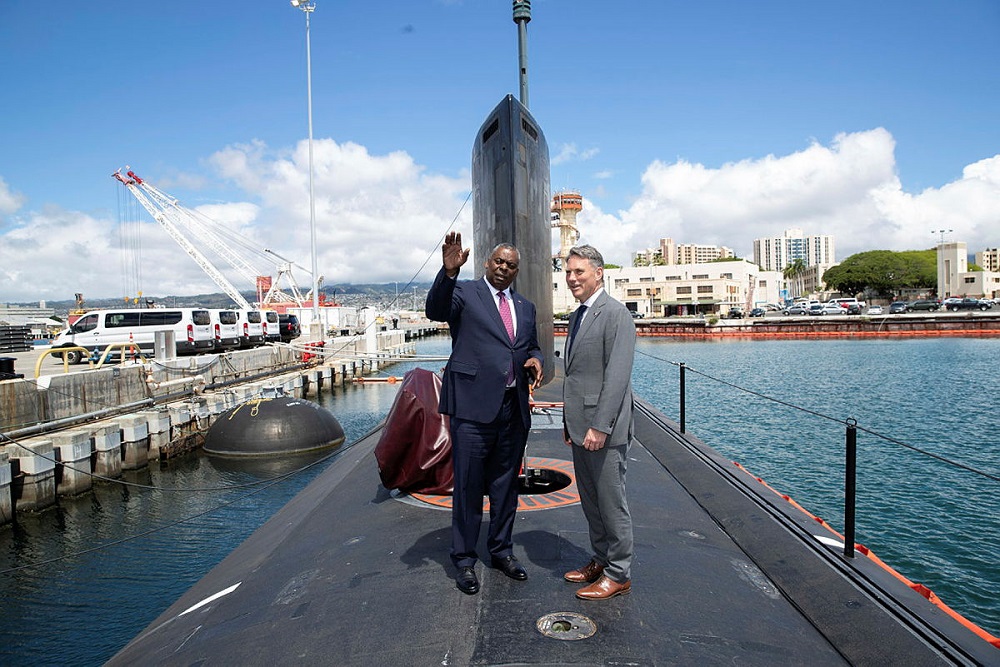
AUSMIN 2023 will occur against the backdrop of the largest ever iteration of Exercise Talisman Sabre in Australia’s north. Talisman Sabre, a bilateral exercise between the US and Australia, has long been a symbol of interoperability between the two nations. However, in recent years, it has assumed a larger role, demonstrating how the alliance partners can work with other regional and extra-regional nations. In the most uncertain global strategic circumstances we have faced since World War II, it reveals the vital roles hard-power capability plays in diplomatic statecraft, in regional stability and as the underpinning of deterrence.
All these facets—from statecraft and stability to diplomacy and deterrence—have been enhanced by the addition of 11 partner nations in the 2023 iteration of the exercise. Talisman Sabre featured prominently in the December 2022 joint AUSMIN statement, which announced the intent to include a number of Pacific nations in the exercise, including Papua New Guinea, Fiji and Tonga.
The symbolism is clear, and significant, but it will yet again be necessary for AUSMIN, and the joint communiqué, to signal substantial progress on the defence side as well as on the foreign policy objectives of cooperation. This, of course, doesn’t mean that the talks in themselves are not highly beneficial for the defence relationship between the two staunch allies. Yet with one authoritarian regime waging war in Europe and another carrying out a coercive form of grey-zone aggression in the Indo-Pacific, AUSMIN needs to be crystal clear that continued and increased investment in defence both bilaterally and with partners is not about military proliferation or the creation of instability but is necessary for regional stability—or as President Ronald Reagan said, a strategy of ‘peace through strength’.
Understandably, most of the discussion on threats faced by the Australia–US alliance and our partners will occur in the classified, closed-door sessions,. But the 2022 communiqué set a high bar in terms of bringing the public along the, at times, tension-filled journey of international security. Among other things, it provided a clear focus on force posture initiatives, including bomber taskforce rotations, sustainment and maintenance.
Given the significance of the AUKUS optimal submarine pathway decision earlier this year, the announceables at this AUSMIN are unlikely to be groundbreaking—and are more likely to be reserved for the visit of Prime Minister Anthony Albanese to Washington later this year. That in itself isn’t a problem; the constant desire for big new announcements should be avoided. Instead, from a public-facing standpoint, the principals will likely focus on practical initiatives to consolidate the 2022 AUSMIN themes of force posture initiatives and logistics. Details on key force posture initiatives including US bomber rotations and infrastructure commitments to northern Australian bare bases such as Tindal are much needed.
As a key element of deterrence, it is important to demonstrate that these discussions will bear fruit for operational outcomes. The urgency of the strategic competition between the US and China—importantly, in which Australia, along with others, is a participant—set out in the defence strategic review must be underpinned by practical progress on the initiatives outlined in AUSMIN 2022.
This is also relevant to Australia’s flailing guided weapons and explosive ordnance enterprise (GWEO), an initiative with strategic importance for both the US and Australia, and on which AUSMIN 2023 should deliver some much-needed progress on US support.
From a messaging standpoint, this weekend’s meeting will likely provide a forum for Defence Minister Richard Marles and Defense Secretary Lloyd Austin to again condemn a number of the unsafe practices of the People’s Liberation Army in the South China Sea. However, the language around this is likely to attempt to strike a fine balance as both countries seek to court more stable ties with the People’s Republic of China. Still, it remains AUSMIN’s duty to hold aggressive actions in breach of international rules to account. A softening of language around international rules at a time when Moscow is flagrantly breaching them would only incentivise Beijing to continue its malicious behavior.
In this context, and following Albanese’s trip to Vilnius, there will be further joint messaging on Russia’s illegal invasion of Ukraine. A key here will be to not limit such messaging to Europe, but to continue the cooperation seen at NATO which clearly outlined that security in the Euro-Atlantic is connected to the Indo-Pacific.
It is on the Ukraine question that there’s potential for more closed-door discussion. The US is likely to pressure Australia to consider doing more to support Ukraine; and, on the question of doing more, it would be interesting to see if the US raises a behind-closed-doors discussion on Australian defence funding, both for Ukraine and in general. That’s a delicate subject, of course, but it is certain not to have gone unnoticed by our major allies that the rhetoric of the recent defence strategic review has not been supported by additional funding in what would likely be deemed a strategically relevant timeframe.
Following the major announcements of the past few years, there will hopefully be behind-closed-doors discussions to ensure that these announcements translate into practical outcomes. Concrete effort between the two countries on GWEO and the wider barriers of the US International Traffic in Arms Regulations and export controls are needed. The US will likely need to provide some assurances on the recent rhetoric in Congress about support for the transfer of Virginia-class nuclear-powered submarines to Australia in the 2030s, shoring up AUKUS arrangements in a bipartisan fashion.
All in all, the timing of the last AUSMIN just seven months ago and Albanese’s expected visit to Washington raise the potential that much of the concrete discussion will be kept behind closed doors. But as with international security, strategic balance is key, and so it will still be vital for defence to feature prominently—in private and in public—in this year’s meeting. The Talisman Sabre backdrop sets the perfect scene to send the message that AUSMIN 2023 has a heavy defence and security focus.

